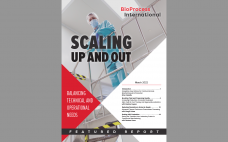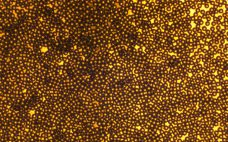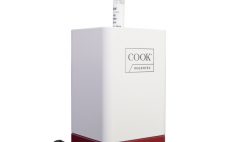This issue introduces an adjustment to our themes of coverage, which for much of BPI’s history have rotated from production to processing to manufacturing, with the introduction a few years ago of the “bioexecutive” focus in December. My somewhat pedantic nature always was slightly offended by the idea of separating “manufacturing” from two other themes that were also elements of manufacturing themselves, even though it was mostly just a matter of semantics. And our new product-development theme encompasses much of…
Search Results for: regenerative medicine
March 2022 Featured Report: Scaling up and Out: Balancing Technical and Operational Needs
 Traditionally,...
Traditionally,...
Introduction: Process Issues in Cell, Gene, and Tissue Therapies
It’s hard to believe that just six years ago, BioProcess International published its first cell therapy supplement, which included just one article on “cell therapy bioprocessing” (1). At the time, most such processing was conducted in special clinical laboratories and academic institutions. As BPI continued to cover this relatively new segment of the biopharmaceutical industry, we heard more about “the product is the process” and “scale out instead of scaling up.” After many trials, errors, and milestones, regenerative medicine has…
Scalable Purification of Viral Vectors for Gene Therapy: An Appraisal of Downstream Processing Approaches
Gene therapy is the transfer of genetic material to a patient’s cells to achieve a therapeutic effect. Therapeutic DNA is largely delivered using viral vector systems based on adenoviruses (Ad), adenoassociated viruses (AAV), and lentiviruses (LV). With the application of such viral vectors as clinical therapeutics growing, scalable commercial processes (particularly for purification) are being investigated and optimized to best ensure that critical quality attributes (CQAs) are retained. Herein we review viral vector purification techniques and the effect of different…
3D Bioprinting Possibilities and Challenges
Three-dimensional (3D) bioprinting is the newest addition to the regenerative medicine family. Now within the industry dedicated to providing more personalized drug products, this new additive-manufacturing technology has the potential to truly focus on individual tissue repair and replacement. In a short period of time, 3D bioprinting has been applied in studies using bones, blood vessels, composite tissues, vascular grafts, tracheal splints, cartilaginous structures, heart tissue (e.g., two-valve heart), and vaginal organs (1). View the full article below – Login…
Driving Therapeutic Innovations: Academic Institutions Can Help Lessen Development Risks
During the Biotech Week in Boston this past October, I had a chance to talk with David DiGiusto (Stanford University) about his work toward advancing bioprocessing and cell therapy development. I asked him to comment on points from his keynote presentation about how academic research groups can sustainably cycle assets into the biopharmaceutical pipeline. University research departments have long made innovative technologies available for commercial licensing. But in the excerpt below, he details ways in which such groups are further…
From the Editor for January
Happy New Year from all of us at BPI. As you can see on the cover, 2017 is the start of our 15th year of publication. Launching a magazine is an uncertain prospect in any era, especially within the trade press format, and our addition of peer-review gives us a split personality. But we are not immune to the print-versus-digital conundrums facing publishers these days, and an anniversary year provides a logical platform on which to update editorial approaches. I…
December From the Editor
It is no big revelation that publishing is changing. How people prefer to read and access information is in some ways a demographic conundrum and in other ways an expected technology-driven evolution. Recognizing those changing attitudes and in honor of our 15th anniversary year as a publication, for 2017 BPI is planning to both adapt to and further drive business and publishing trends in ways that truly meet the information needs of our readers around the world. We simply didn’t…
December Spotlight
BPI Advisor Will Be Missed Thomas J. Pritchett, PhD (1950– 2016), was a member of the BioProcess International advisor board since its founding. He also was founder, publisher, and editor of the BioQuality Newsletter and provided decades of analytical and quality control training to many people in the biopharmaceutical industry, both on the industrial and regulatory sides. Pritchett always provided insightful, well–thoughtout approaches to implementing current good manufacturing practices (CGMPs) under all conditions, ranging from virtual to global companies. He…
Cook Regentec and Asymptote Introduce the CellSeal Automated Thawing System
Cook Regentec, focused on developing research and clinical tools to advance regenerative medicine therapies from the lab to the patient, and Asymptote Ltd., specialists in cryochain for regenerative medicine, today announced the launch of the CellSeal® Automated Thawing System. The new system, which has been developed as part of a collaboration between the two companies, provides users with thorough control in the thawing of cryogenically frozen cells, a critical step in the delivery of cell and gene therapies. The CellSeal®…










